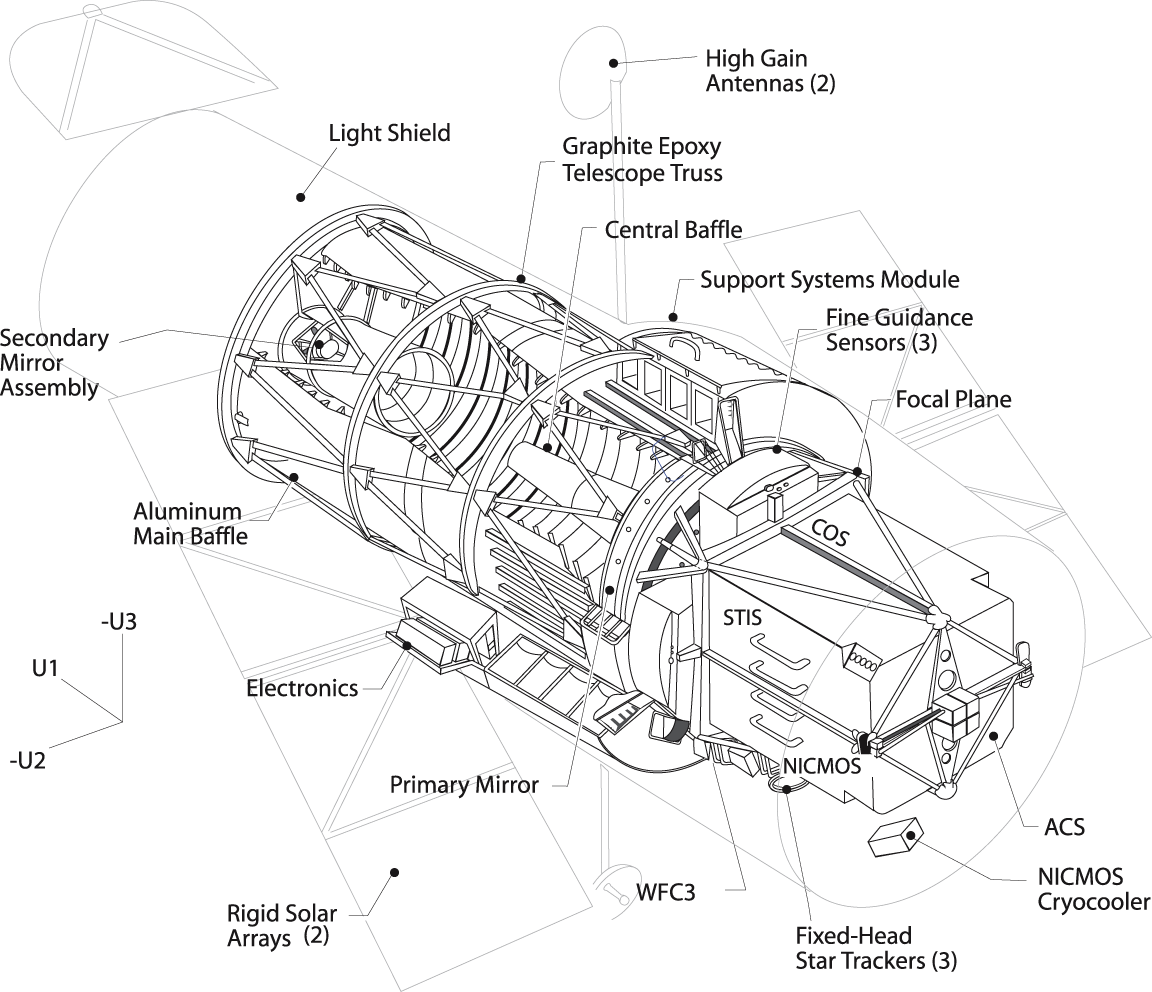HST Cycle 26 Primer System Overview
Telescope Design and Field of View
The design and layout of HST are shown schematically below. The telescope is powered by two solar arrays that are oriented towards the sun. Nickel-hydrogen batteries power the telescope during orbital night. Two high-gain antennae provide communications with the ground via the Tracking and Data Relay Satellite System (TDRSS). Power, control, and communication functions are carried out by the Support Systems Module (SSM) that encircles the primary mirror.
Scientific instruments (SIs) are mounted in bays behind the primary mirror. WFC3 occupies one of the four radial bays; it has a 45° pick-off mirror that allows it to receive the on-axis beam as shown in the figure below. There are three Fine Guidance Sensors (FGSs), each in the other radial bays, that receives light that is 10 to 14 arcseconds off-axis in the telescope’s field of view. At least two FGSs are required to guide the telescope, therefore, it’s possible to conduct astrometric observations with the third FGS. The remaining SIs are mounted in the axial bays and receive images several arcminutes off-axis.
The Hubble Space Telescope Configuration after Servicing Mission 4 in 2009 |
|---|
The major components are labeled, and a diagram in the lower left shows the U1, U2, and U3 spacecraft axes.
The coordinate system used for HST’s focal plane is fixed to the telescope; it consists of three orthogonal axes: U1, U2, and U3. As shown in the figure below, U1 lies along the optical axis, U2 is parallel to the solar array rotation axis, and U3 is perpendicular to the solar array axis. (Note: Some HST documentation uses the alternative V1, V2, V3 coordinate system for which V1=U1, V2= –U2 and V3= –U3.)
The HST Field of View |
|---|
Aperture locations for the science instruments and FGSs are shown in the (U2, U3) coordinate system. Precise values, available in the HST Instrument Handbooks, depend on the subtleties in the aperture definitions and operational modes.
The table below shows the nominal effective relative aperture locations
Instrument | Aperture | U2 (arcsec) | U3 (arcsec) |
|---|---|---|---|
ACS | WFC SBC | –259 –205 | –239 –467 |
COS | +229 | -229 | |
FGS | FGS1R | –722 | 8 |
STIS | 214 | 225 | |
WFC3 | UVIS IR | -9 0 | -3 -9 |

